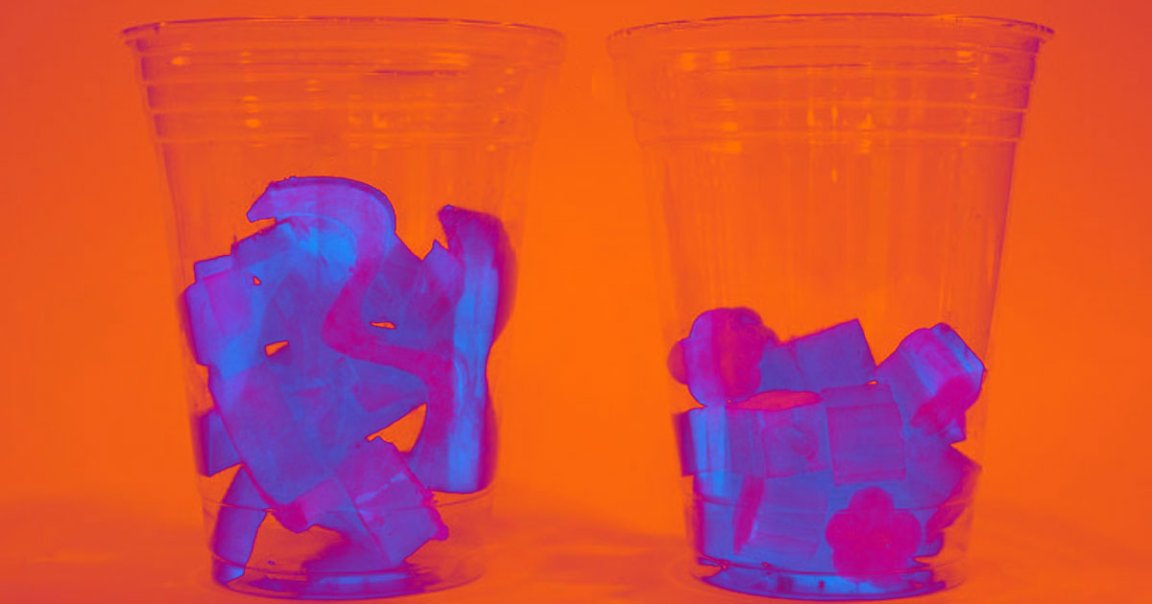
Optical Illusion
Armed with a 3D printer filled with some sort of nondescript food paste, a team of MIT engineers is revealing how the shape and arrangement of foods can trick our brains into feeling more or less satisfied after a meal.
For instance, your brain may perceive two different arrangements of the same amount of food paste (seriously, look at this stuff) as two meals of entirely different caloric values, according to Gizmodo. It’s a well-known psychological trick often used in meal plating, but the 3D printed meals reveal exactly what it is about different shapes that fool our brains.

Tough to Swallow
Experimenting with 3D printed foods revealed two clear trends about the link between food presentation and appetite. First, printing food into more complex, intricate patterns made people feel as though they were being handed more food and reported being more satisfied after eating it than they did if the food was printed into a similar — but calorie-equivalent — blob.
The second has to do with food density — a more porous print was more satisfying than a condensed print. That’s because it not only took up more space but took longer to chew than something that could be consumed in one or two bites.
Eye Spy Nom Nom
Of course, we’re not all sitting around whatever foodstuff comes out of a 3D printer’s nozzle.
But, if nothing else, the MIT experiment can help us understand our own perceptions of food — and the weird psychological exploits that can mess them up.
READ MORE: 3D Printing Foods With Complex Designs Can Trick Diners Into Eating Less While Still Feeling Full [Gizmodo]
More on 3D printed food: NASA Astronauts Can Now 3D-Print Pizzas in Space